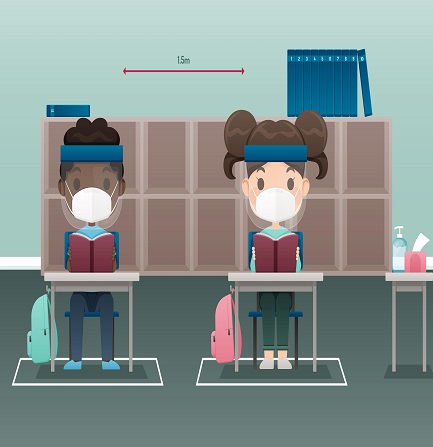What is blockchain?
Blockchain is a distributed digital ledger that stores different types of data. Unlike traditional databases that are centrally managed by a single institution, blockchain is decentralized. Rather than relying on a central administrator, blockchain relies on a network of computers called nodes that store identical copies of databases. This decentralized nature makes blockchains highly secure and resistant to hacking and tampering.
How does blockchain work?
The core of the blockchain consists of a chain of blocks that store data. Each block contains a series of transactions or information and these blocks are chronologically linked. When new data needs to be added to the blockchain, it is first verified by the majority of nodes on the network. Once consensus is reached, new data is added to a new block and added to the chain. This process ensures the integrity and immutability of data stored on the blockchain.
There are two main types of blockchain:
1. Public and private blockchains
Public blockchain and private blockchain. Public blockchains such as Bitcoin and Ethereum are open to anybody who needs to take an interest. This allows anyone to read, write and inspect data on the blockchain. Due to their decentralized nature, public blockchains are highly transparent and secure. Private blockchains, on the other hand, are controlled by a particular organization or gathering. These blockchains are "granted" and access to the network is restricted to selected participants. Private blockchain offers more control and privacy but at the cost of some decentralization and transparency.
2. Blockchain mechanism
The name "blockchain" reflects the structure of this technology. A blockchain is made up of individual blocks, each containing a set of data or transactions. These blocks are interconnected in a chain to form a continuous, tamper-proof record of information.
Transactions and verification
In a blockchain network, transactions are recorded in blocks and verified by participating nodes. For example, for cryptocurrencies, nodes verify that transactions are legitimate and that coins have not been duplicated. This verification process ensures data integrity and prevents fraud and double spending. consensus mechanism
Consensus mechanisms play an important role in blockchain networks. These are the protocols used to reach an agreement between nodes regarding the validity of transactions and the addition of new blocks to the chain. Common consensus mechanisms include Proof of Work (PoW), Practical Byzantine Fault Tolerance (pBFT), Proof of Stake (PoS), and Delegated Proof of Stake (DPoS). These mechanisms ensure that all nodes in the network are in the same state and prevent malicious actors from manipulating the blockchain.
Encryption and security
Blockchain is based on cryptographic technology to protect transactions and data. Transactions are encrypted using cryptographic keys and blocks are linked using hash functions. This cryptographic security makes it very difficult for hackers to modify or manipulate data stored on the blockchain. Additionally, the decentralized nature of blockchain makes it highly resistant to attacks, with no single point of failure.
Blockchain Pros and Cons
Advantages of blockchain
Blockchain has several key advantages that make it an attractive technology for various applications.
Safety:
Due to the decentralized and cryptographic nature of blockchain, it is highly secure and resistant to hacker attacks and tampering. Transactions and data stored on the blockchain are difficult to change, ensuring system integrity.
Efficiency:
Blockchain can streamline transactions, eliminate the need for intermediaries, reduce costs, and improve efficiency. It enables faster and more direct transfers of wealth, especially across borders.
Trust and transparency :
Blockchain provides a trusted environment where participants can independently verify transactions. The transparency of the blockchain ledger promotes trust and accountability.
Savings measures:
By eliminating middlemen and streamlining processes, blockchain can significantly reduce transaction costs. It also eliminates the need for paper-based documents and manual records.
Versatility:
Cryptocurrencies are the most well-known use case, but blockchain can be applied to many different industries and use cases. It could revolutionize finance, supply chain management, healthcare, voting systems, and more.
Disadvantages of blockchain
Despite the many advantages of blockchain, it also has some limitations and challenges.
Scalability:
Blockchain networks, especially public networks, can face scalability issues as the number of transactions increases. The verification process and consensus mechanism can slow down the network, resulting in slower transaction speeds.
Power consumption:
Blockchain networks that use proof-of-work consensus mechanisms require a large amount of computing power and are therefore energy intensive. This has raised concerns approximately the natural effect of blockchain technology.
Asset security:
Blockchains provide strong security for digital assets, but losing private cryptographic keys can result in irreversible loss of access to those assets. Users should carefully manage and secure keys to prevent loss or theft.
Potential Illegal Activity:
The anonymity and privacy provided by blockchain can lead to illegal activities. Illegal transactions on the blockchain can be difficult to track and trace, creating regulatory and legal challenges.
Blockchain use cases
Blockchain technology is finding applications beyond cryptocurrencies. Here are a few of the key use cases:
Cryptocurrency:
Cryptocurrencies such as Bitcoin and Ethereum are the best-known applications of blockchain. Blockchain enables secure and decentralized transactions, allowing individuals to send and receive digital currencies without the need for intermediaries such as banks.
Banking:
Blockchain has the potential to revolutionize banking and financial services. Streamline payment processing, cross-border transfers, and remittances, and make transactions faster and cheaper. Blockchain also increases the security and transparency of financial transactions.
Transfer of property:
Blockchain allows you to record and transfer ownership of various digital and physical assets. Instantly and securely transfer assets such as digital art, real estate, and intellectual property. Blockchain-based wealth transfer eliminates the need for intermediaries, reducing the risk of fraud and disputes.
Smart contract:
A smart contract is a self-executing contract that automatically enforces contract terms. Based on blockchain technology, smart contracts eliminate the need for intermediaries and provide a transparent and tamper-proof way to conclude contracts. It has applications in areas such as supply chain management, insurance, and legal contracts.




















 website development.png)












0 Comments
No comment